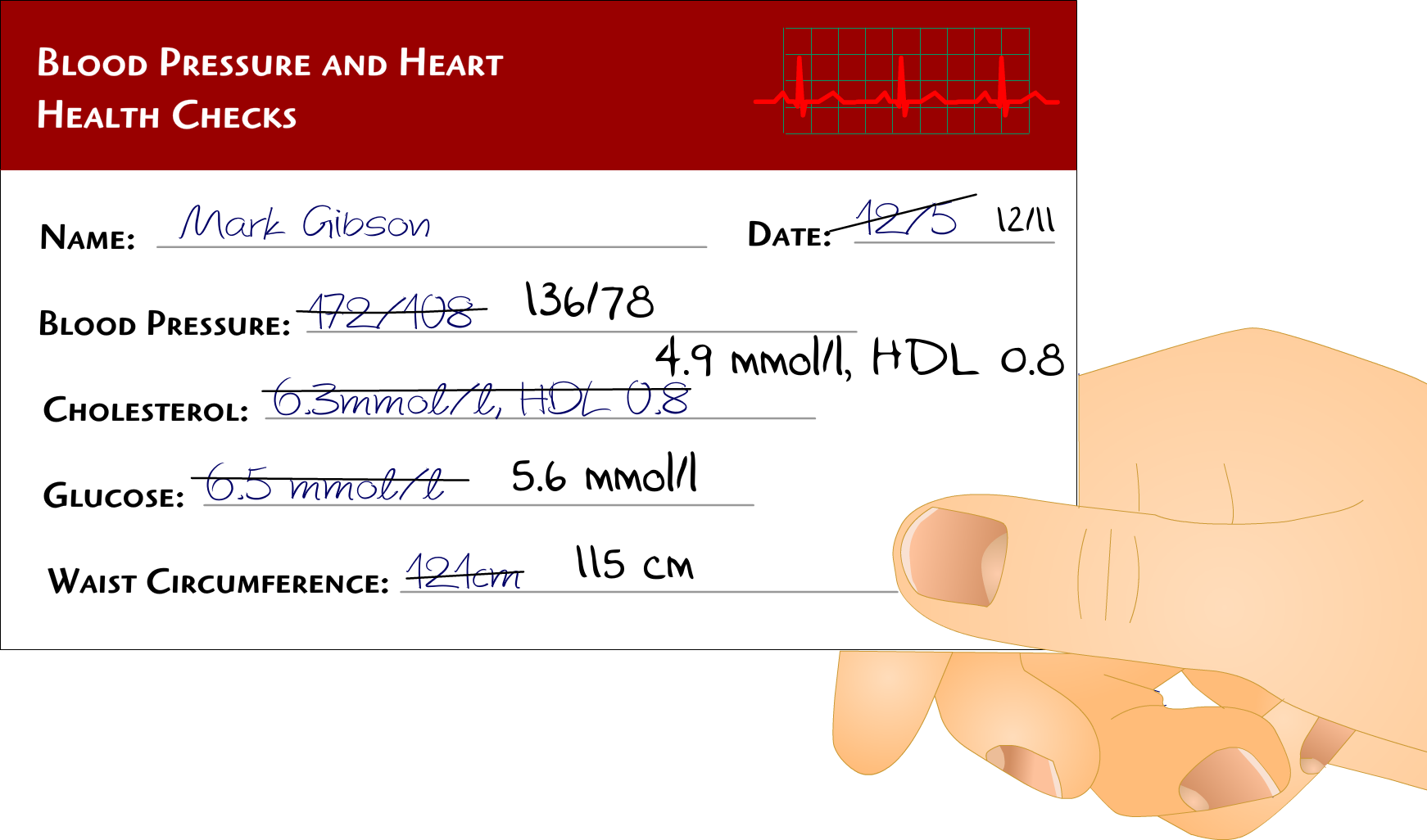Earlier in the week Bert attended the GP practice to see Nurse Claire about his flu vaccination. The nurse suggested that Bert comes back for a BP and health check, as he rarely attends the surgery.
Below are his non-fasted results from the cardiovascular health check. (Some areas may have locally specific referral criteria which differs from the national guidelines. For example, some areas use a fasting blood sample during an initial consultation.)
A tool that is used across Scotland and within HEART-e is ASSIGN a cardiovascular risk score. This was developed in collaboration with Dundee University, Scotland in 2006.
ASSIGN includes social deprivation for the first time, and family history of cardiovascular disease, with the classic risk factors. It identifies people free of cardiovascular disease most likely to develop it over ten years. ‘High risk’ (score 20 or more) implies risk-lowering medication and/or other medical help. ASSIGN is the cardiovascular risk score chosen for use by SIGN (Scottish Intercollegiate Guidelines Network) and Scottish Government Health Directorates.
The nurse calculates Bert’s ASSIGN score. Look at Bert’s results above and work out the results for yourself. Remember, he is 66, his postcode is QQ1 1QQ and he has a family history of CVD. Calculate Bert’s ASSIGN score.


Bert (age 66) recently retired from his job as a hospital porter. His wife died two years ago and he now lives alone, with good support from both his son and his daughter. He is less active now that he has stopped working but enjoys going to the football on a Saturday with his son. On a Sunday he visits his daughter for a roast dinner.
Bert does not like ready meals, so does his own cooking. He enjoys a glass of wine with his meal on week nights. He smokes 30 cigarettes per day. His younger brother has angina.
By the end of this case you should have developed awareness of:
- The need for life-long medication management and clinical monitoring
- The need to make lifestyle changes and the long term commitment this requires
- Appreciating Mark’s responsibility for his health and well-being
Mark was regularly reviewed until he was on optimal medication and his blood pressure and cholesterol reached his treatment target.

Mark considers his diet and begins to discuss changes that he could make. With support and information from the nurse, he recognises changes he could make with every day foods.
Using the agenda-setting technique is a good way to focus on the main concerns and to avoid lecturing the patient or ‘talking in monologue’. Let’s look at these in relation to Mark: The nurse encourages Mark to discuss activity by using an agenda setting tool. This highlights areas of lifestyle management for Mark to consider.
Readiness ruler
Is a structured and directive way of enabling patients to say how they feel about a particular health behaviour change. Learn more about the readiness ruler in module 5.
Mark and the nurse discuss his lifestyle.








